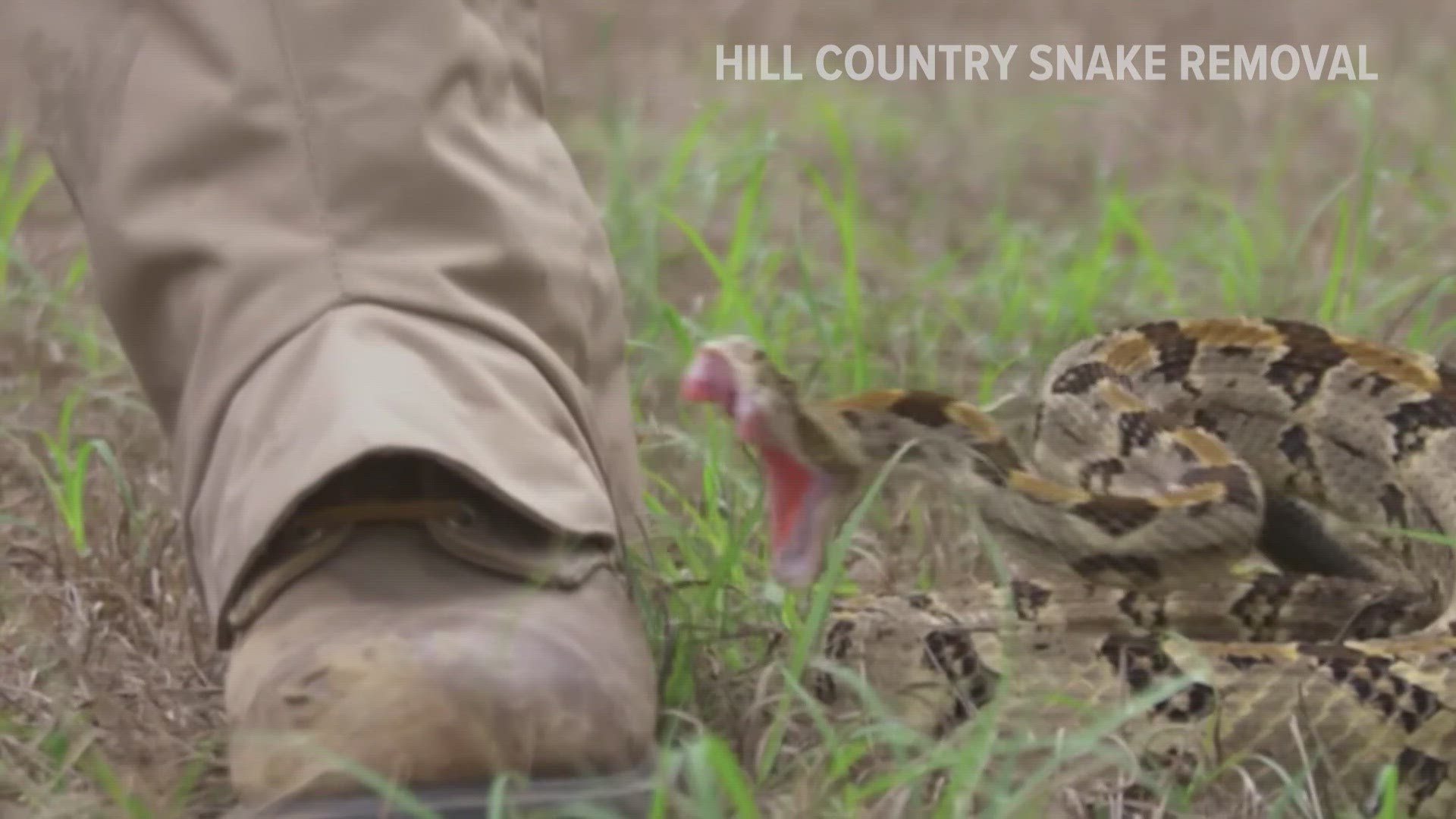SAN ANTONIO — For some people they are the things of nightmares. Snakes are scary to most of us. And if you step near one, then see it, chances are it will startle you.
At least rattlesnakes are gentleman enough to warn you if you get too close, but is the myth true? That may be changing.
They are one of if not the most deadly snake in North America. That sound strikes fear in the heart of the bravest person and Texas is home to nine species of rattlers.
"In North America, they are the ones that pose the most threat to people," said Tanner Easton, San Antonio Zoo.
The CDC estimates seven to eight thousand people in the U.S. are bitten by venemous snakes every year. That sounds like a lot, until you consider there are roughly 332 million people in the United States.
"Snakes aren't out to get us... no more than any other animal,” said Easton.
Still, on average, four to five people die each year from snake bites. Rattlesnakes are the only ones that warn you, sometimes.
But, you can read articles online which say they're learning not to rattle.
"Always take with a grain of salt, because there are a lot of factors that would cause that snake to lose that warning system,” said Easton.
And the opinions on whether that's true depends on to whom you talk.
"Not at all,” said Easton.
Brett Parker, who owns Hill Country Snake Removal, said his fascination with snakes started as a child.
"Well there's not a lot of animals, as a kid that you can go catch. Lizards, turtles, snakes…I mean you can't go grabbing a deer or something like that,” said Brett Parker, Hill Country Snake Removal.
You shouldn't go grabbing snakes either, unless you know what you're doing. Parker says he's probably removed 50 this year.
"Like every snakes different. I mean one can rattle when you're 100 yards away, but a lot of them won't rattle when you're two inches away,” said Parker.
Most of us won't get two inches from them. Not intentionally at least. We have that inherrent fear, myself included.
"Oh geez!"
Parker says education is the best defense. He even holds classes to try to help people get over that fear. As for those articles that snake rattlers are evolving to not rattle, because pigs are hunting them down and eating them. Pigs have a tough skin, and a lot of fat, so if they are bitten the venom rarely enter their bloodstream. Parker says the myth is just that.
"And I tell people, a momma rattlesnake doesn't grab their young and warn them about the pigs that will eat them when they grow up if they rattle. They have no idea what a pig is,” said Parker.
He says the reason a rattler starts buzzing is, they're scared. And just like people, they have different personalities.
A Western Diamondback, for example wouldn't strike even when Parker, while wearing snake guards, nudged it repeatedly. A timber-rattler on the other hand was much more grumpy and almost immediately bit.
"If you're getting bitten by a rattlesnake it's because you never saw it and you startled it or you stepped on it, or cornered it, or you're doing something stupid,” said Parker.
The best way avoid that, Parker says is to avoid the snake. If you see one, and you even think it might be venomous, leave it alone and call someone who knows what they're doing.
"You don't have to kill it to be safe! You know, once you see the snake, the danger's over. Anything bad that happens after that is up to you,” said Parker.
Parker also busted another myth for us. He says baby venomous snakes are no more dangerous that bigger snakes and it might also be the exact opposite.
They have the same venom and can control how much they inject. They just naturally, because of their size, have less.
MORE ON SNAKES

